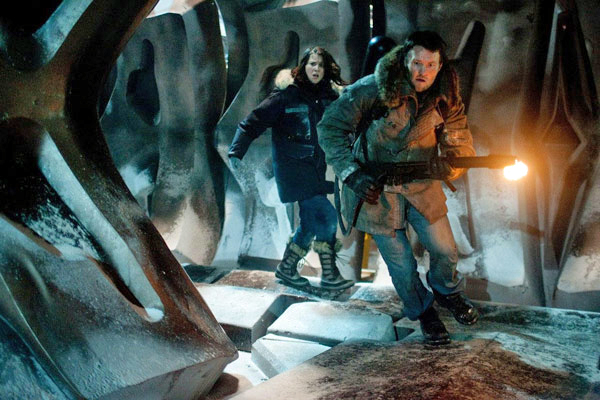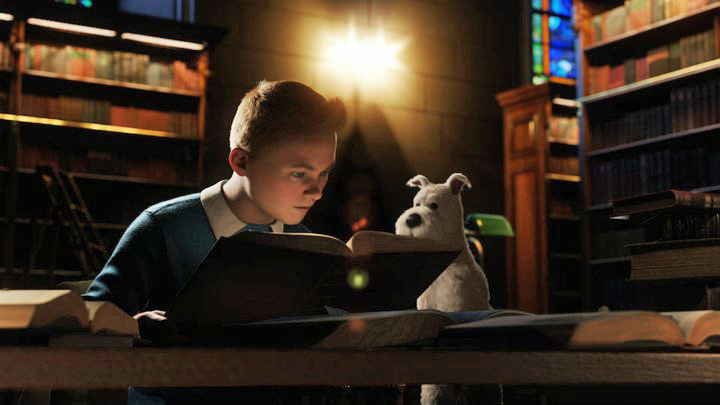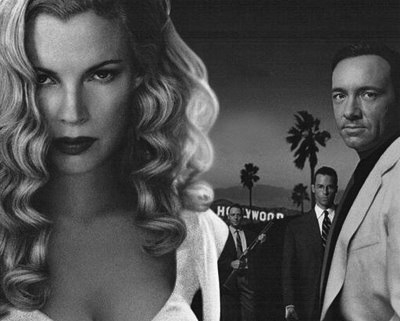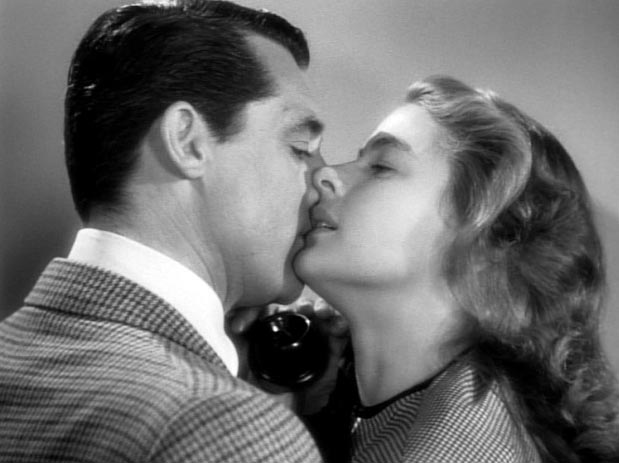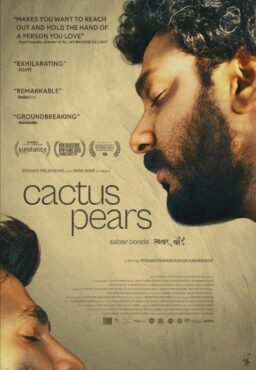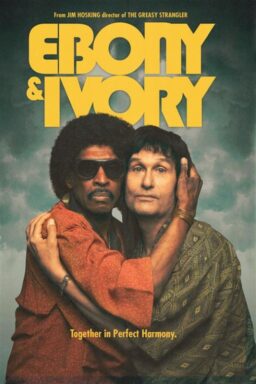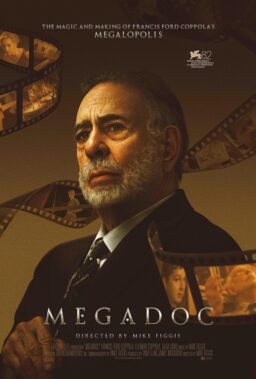Q. In your review of “The Cable Guy,” you wrote: “We want to like Jim Carrey. A movie that makes us dislike him is a strategic mistake.” Maybe the problem with “The Cable Guy” isn’t Lou Holtz Jr.’s screenplay; maybe the problem is Ben Stiller‘s direction. I’ve only seen 10 minutes of the “Ben Stiller Show”, but in that 10 minutes Stiller made very unfunny, vicious fun of Amish people. Janeane Garafalo (star of “The Truth About Cats and Dogs“) was in the skit and afterwards, in a taped segment showing her and Stiller walking down the street talking to each other, she notes her skepticism about just how funny a vicious attack on gentle, peace-loving people can be. Stiller’s face seems to register not a single sign he’s got a clue what she’s saying. (Michael Brant, San Rafael, CA.)
A. The story of how Columbia paid Carrey to star in a $20 million bomb that trashes his own image is becoming the stuff of Hollywood legend. My sources say Holtz’s original script was a light-hearted buddy comedy, originally set to star Chris Elliott and then Chris Farley. When Farley dropped out because of a contract conflict, it fell into the hands of Jim Carrey, who brought in writer Judd Apatow. Carrey ordered a third act like “War of the Roses,” where the two characters kill each other. Apatow rewrote the script and was a link to director Stiller, whose TV show he had written for. Their early drafts were even darker than the final version, and Columbia executives protested they didn’t want such a grim movie. But even after rewrites, “The Cable Guy” is a sour, unpleasant turn-off. Amazing. You’d think that Carrey, who was collecting the biggest single acting paycheck in movie history, would have done everything possible to make a popular, accessible movie.
Q. In your discussion of the weapons in “Eraser,” you quote the director, who says “They can pierce three-foot thick cement walls and then knock a canary off a tin can with absolute accuracy.”
Shooting anything through a three-foot wall of cement wouldn’t be that big a trick, cement being a fine, gray, powder having little intrinsic strength. Mix cement, sand, gravel, and water, let it set up, and you have: concrete, which is considerable stronger. (Bruce Small, Tucson, AZ )
A. Hey, I just quote these Hollywood geniuses, I don’t do their contracting for them.
Q. I’d like to know the name and location of the coffee shop/restaurant that’s in every other movie I’ve seen lately. It was where the restaurant scenes were shot for “Pulp Fiction.” It was where Ike Turner smacked Tina Turner in “What’s Love Got To Do With It.” It was where Buck Henry and Fred Ward had breakfast (and where Lily Tomlin’s character worked) in “Short Cuts.” And I saw it most recently in “Heat.” It’s where the DeNiro gang debriefed after the armored-car job. I wonder if directors think people don’t notice stuff like this. I do. (Nancy Nall, Fort Wayne, IN)
A. Coffee shops are so generic that they can look the same without being the same. The location for “What’s Love,” is Johnny’s Broiler at 7447 Firestone Blvd, Downey, CA, which is now out of business. For “Heat,” it’s Bob’s Big Boy, 4211 Riverside Dr., Toluca Lake, CA. I have queried Fine Line and Miramax about the “Short Cuts” and “Pulp Fiction” coffee shops, but tracking down this info does not seem to be high on their list of priorities.
Q. With the exception of Disney’s yearly animated features, the movie musical has almost completely vanished. I believe I know what has happened to it. Hollywood musicals were primarily spectacle. People went to see them not for the plot but for the lavish production numbers. Recent films like “Twister” and “Mission: Impossible” have been described by critics in terms that could just as easily be applied to Hollywood musicals. Regarding “Twister” you wrote: “As drama, “Twister”…has no time to waste on character, situation, dialogue and nuance. The dramatic scenes are holding actions between tornadoes. As spectacle, however, “Twister” is impressive. The tornadoes are big, loud, violent and awesome, and they look great.” Well, swap “song and dance” for “tornado” and you’ve got a pretty good description of a Busby Berkeley musical. It looks as if the big budget special effects extravaganza is adopting the role of the movie musical. What do you think? (Brad Hoehne, Columbus, Ohio)
A. This is an intriguing theory. Certainly the audience expectations are the same: When a musical production number or a special effects sequence gets underway, we suspend our disbelief and surrender ourselves to the spectacle. Such scenes typically involve a central character who is able to transcend time, gravity and logic while effortlessly maintaining his poise and personality. In other words, Fred Astaire and Arnold Schwarzenegger are doing essentially the same thing.
Q. Re your discussion of whether studios sometimes add adult dialog to movies to get a PG-13 or R rating (fearing that moviegoers will think G or PG are too tame). I understand it is common practice to add a nude scene or dub language into made-for-TV “movies of the week” when they are released on home video, to get them an R rating. This makes them more attractive to renters. A few years back Drew Barrymore complained that they hired a body
double for nude scenes added to her MOW about Amy Fisher. She would have done the nude scene herself, and was mad that the actress hired didn’t resemble her enough (maybe there was a tattoo issue, here). (W. C. Martell, Studio City, Ca.)
A. Yet many video stores make much of their decision not to stock NC-17 films (not porno–but legit NC-17s like “Showgirls“). Let me see if I can follow this reasoning: They’re encouraging spicy content for movies available to younger viewers, while forbidding it in videos available to adults.
Q. In your review of “The Cable Guy,” you wrote: “We want to like Jim Carrey. A movie that makes us dislike him is a strategic mistake.” Maybe the problem with “The Cable Guy” isn’t Lou Holtz Jr.’s screenplay; maybe the problem is Ben Stiller’s direction. I’ve only seen 10 minutes of the “Ben Stiller Show”, but in that 10 minutes Stiller made very unfunny, vicious fun of Amish people. Janeane Garafalo (star of “The Truth About Cats and Dogs”) was in the skit and afterwards, in a taped segment showing her and Stiller walking down the street talking to each other, she notes her skepticism about just how funny a vicious attack on gentle, peace-loving people can be. Stiller’s face seems to register not a single sign he’s got a clue what she’s saying. (Michael Brant, San Rafael, CA.)
A. The story of how Columbia paid Carrey to star in a $20 million bomb that trashes his own image is becoming the stuff of Hollywood legend. My sources say Holtz’s original script was a light-hearted buddy comedy, originally set to star Chris Elliott and then Chris Farley. When Farley dropped out because of a contract conflict, it fell into the hands of Jim Carrey, who brought in writer Judd Apatow. Carrey ordered a third act like “War of the Roses,” where the two characters kill each other. Apatow rewrote the script and was a link to director Stiller, whose TV show he had written for. Their early drafts were even darker than the final version, and Columbia executives protested they didn’t want such a grim movie. But even after rewrites, “The Cable Guy” is a sour, unpleasant turn-off. Amazing. You’d think that Carrey, who was collecting the biggest single acting paycheck in movie history, would have done everything possible to make a popular, accessible movie.
Q. In your discussion of the weapons in “Eraser,” you quote the director, who says “They can pierce three-foot thick cement walls and then knock a canary off a tin can with absolute accuracy.”
Shooting anything through a three-foot wall of cement wouldn’t be that big a trick, cement being a fine, gray, powder having little intrinsic strength. Mix cement, sand, gravel, and water, let it set up, and you have: concrete, which is considerable stronger. (Bruce Small, Tucson, AZ )
A. Hey, I just quote these Hollywood geniuses, I don’t do their contracting for them.
Q. I’d like to know the name and location of the coffee shop/restaurant that’s in every other movie I’ve seen lately. It was where the restaurant scenes were shot for “Pulp Fiction.” It was where Ike Turner smacked Tina Turner in “What’s Love Got To Do With It.” It was where Buck Henry and Fred Ward had breakfast (and where Lily Tomlin’s character worked) in “Short Cuts.” And I saw it most recently in “Heat.” It’s where the DeNiro gang debriefed after the armored-car job. I wonder if directors think people don’t notice stuff like this. I do. (Nancy Nall, Fort Wayne, IN)
A. Coffee shops are so generic that they can look the same without being the same. The location for “What’s Love,” is Johnny’s Broiler at 7447 Firestone Blvd, Downey, CA, which is now out of business. For “Heat,” it’s Bob’s Big Boy, 4211 Riverside Dr., Toluca Lake, CA. I have queried Fine Line and Miramax about the “Short Cuts” and “Pulp Fiction” coffee shops, but tracking down this info does not seem to be high on their list of priorities.
Q. With the exception of Disney’s yearly animated features, the movie musical has almost completely vanished. I believe I know what has happened to it. Hollywood musicals were primarily spectacle. People went to see them not for the plot but for the lavish production numbers. Recent films like “Twister” and “Mission: Impossible” have been described by critics in terms that could just as easily be applied to Hollywood musicals. Regarding “Twister” you wrote: “As drama, “Twister”…has no time to waste on character, situation, dialogue and nuance. The dramatic scenes are holding actions between tornadoes. As spectacle, however, “Twister” is impressive. The tornadoes are big, loud, violent and awesome, and they look great.” Well, swap “song and dance” for “tornado” and you’ve got a pretty good description of a Busby Berkeley musical. It looks as if the big budget special effects extravaganza is adopting the role of the movie musical. What do you think? (Brad Hoehne, Columbus, Ohio)
A. This is an intriguing theory. Certainly the audience expectations are the same: When a musical production number or a special effects sequence gets underway, we suspend our disbelief and surrender ourselves to the spectacle. Such scenes typically involve a central character who is able to transcend time, gravity and logic while effortlessly maintaining his poise and personality. In other words, Fred Astaire and Arnold Schwarzenegger are doing essentially the same thing.
Q. Re your discussion of whether studios sometimes add adult dialog to movies to get a PG-13 or R rating (fearing that moviegoers will think G or PG are too tame). I understand it is common practice to add a nude scene or dub language into made-for-TV “movies of the week” when they are released on home video, to get them an R rating. This makes them more attractive to renters. A few years back Drew Barrymore complained that they hired a body
double for nude scenes added to her MOW about Amy Fisher. She would have done the nude scene herself, and was mad that the actress hired didn’t resemble her enough (maybe there was a tattoo issue, here). (W. C. Martell, Studio City, Ca.)
A. Yet many video stores make much of their decision not to stock NC-17 films (not porno–but legit NC-17s like “Showgirls”). Let me see if I can follow this reasoning: They’re encouraging spicy content for movies available to younger viewers, while forbidding it in videos available to adults.

